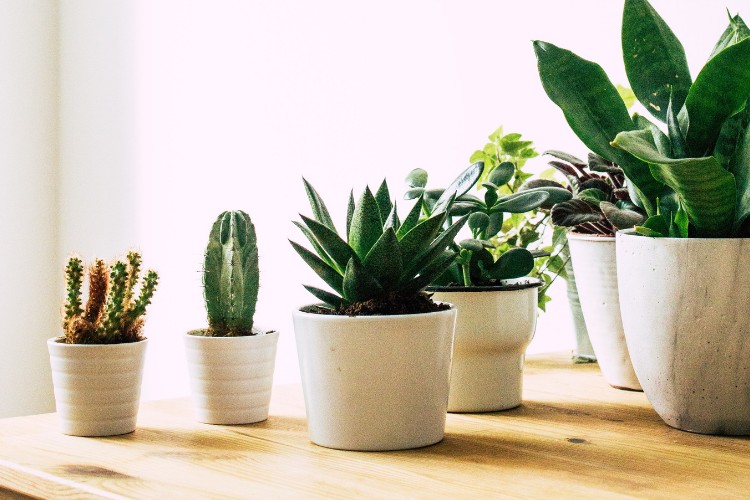
Indoor air quality has become a major concern in recent years as more research has surfaced revealing its potential to cause harm to our bodies. Toxic chemicals are released into the air of our homes daily when we cook and clean. Smoking and furnishings and even putting on a coat of nail polish are all indoor sources of pollution. The chemicals tend to build up indoors due to the often-poor ventilation. Other than opening windows and letting the sunshine in, we can use indoor plants to help reduce the indoor pollution. A cost effective and well-placed accent indoor plant is a great way to spruce up your home.
A 1989 study conducted by the National Aeronautics Space Administration (NASA), investigated the efficacy of common indoor plants, in filtering the common household pollutants, benzene, trichloroethylene and formaldehyde. In the study, the various plants were kept in their pots and soil and left in a sealed chamber exposed to high concentrations (well above normal household exposure) of the pollutants for 24 hours. The table below indicates which plants showed the greatest efficacy in filtering each chemical.
Pollutant |
Major Indoor Source |
Potential Health Effects |
Top 3 Suitable Plants (in order or efficacy) |
| Benzene | A solvent present in items including gasoline, inks, paints plastics, and rubber. It is used in the manufacture of detergents, dyes | Irritate skin and eyes, shown to be embryotoxic and carcinogenic | Gerbera daisy (Gerbera jamesonii)
Pot mum (Chrysanthemum morifolium) Peace lily (Spathiphyllum “Mauna Loa”)
|
| Trichloroethylene (TCE) | A solvent present in printing inks, paints, lacquers/ varnishes, and adhesives, carpets | Evidence as a liver carcinogen | Gerbera daisy (Gerbera jamesonii)
Marginata (Dracaena marginata) Peace lily (Spathiphyllum “Mauna Loa”)
|
| Formaldehyde | Particle board, pressed wood such as ply wood, urea-formaldehyde foam insulation, grocery bags, facial tissues, and paper towels, wallpaper, cigarette smoke, natural gas, kerosene, water repellents, used as a fire retardant | Mucous membrane irritant of eyes nose and throat, headaches, asthma | Bamboo palm (Chamaedorea seifrizii)
Janet Craig (Dracaena deremensis ) Mother-in-law’s tongue (Sansevieria laurentii)
|
Later in the study, under similar conditions, benzene, trichloroethylene and formaldehyde, were injected into the air, though this time at low concentrations. The plants showing the most significant removal of chemicals include English Ivy, which removed 89.8% of benzene, Peace lily, which removed 23% of trichloroethylene (TCE) and Mass cane removed 70% of formaldehyde.
If you feel indoor air pollution is a concern for your home I highly recommend selecting plants that are useful in reducing the effects of trichloroethylene, benzene and formaldehyde.
Check out the full article here.

